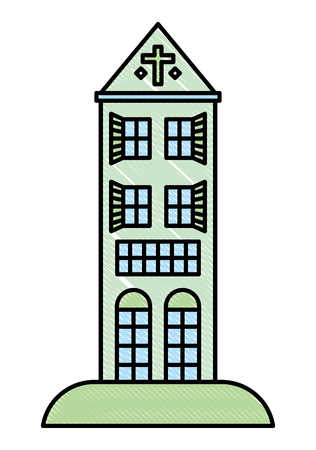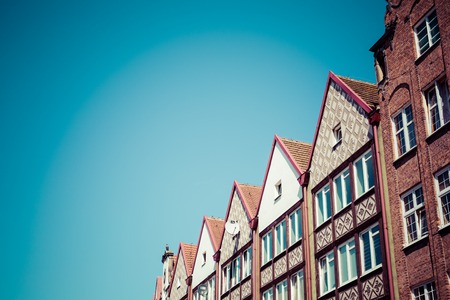1. Understanding Minimalist Feng Shui in a Modern Context
Starting your minimalist Feng Shui journey in a contemporary American apartment means blending the timeless wisdom of Feng Shui with the simplicity and practicality of minimalism. Both philosophies focus on creating spaces that support well-being, clarity, and harmony—values that fit perfectly with today’s fast-paced American lifestyle.
What Is Feng Shui?
Feng Shui is an ancient Chinese practice centered on arranging your living space to promote positive energy (or “chi”). The goal is to create environments where energy can flow freely, supporting health, happiness, and prosperity. In traditional Feng Shui, elements like furniture placement, use of color, natural light, and specific décor are carefully considered.
What Is Minimalism?
Minimalism is about simplifying your environment by keeping only what’s essential and meaningful. This design approach values clean lines, open spaces, and intentional living. It encourages you to let go of clutter—both physical and mental—to make room for more calm and purpose in your daily life.
How Minimalism and Feng Shui Work Together
Minimalism and Feng Shui complement each other beautifully, especially in American apartments where space can be limited. By combining these two philosophies, you can create a home that feels both serene and spacious without sacrificing comfort or personality.
Core Principles: Side by Side
| Feng Shui Principle | Minimalist Approach | How They Align in Apartment Living |
|---|---|---|
| Energy Flow (Chi) | Open Space | Keep walkways clear and arrange furniture for easy movement |
| Balance of Elements (Wood, Fire, Earth, Metal, Water) | Intentional Use of Materials | Select simple décor made from natural materials for warmth and balance |
| Simplicity in Layout | No Excess Clutter | Edit belongings regularly; keep surfaces tidy for a peaceful vibe |
| Connection to Nature | Calming Color Palettes & Plants | Add greenery or natural light to boost tranquility without overcrowding the space |
The American Apartment Perspective
In many modern American apartments, you may face challenges like limited square footage or fixed layouts. Minimalist Feng Shui helps you maximize every inch by focusing on quality over quantity—choosing multifunctional furniture, letting go of non-essentials, and arranging rooms to support relaxation and productivity. It’s not about following strict rules but about finding what works best for you while keeping your space as open and stress-free as possible.
Assessing Your Apartment’s Layout and Energy Flow
Before you can create a minimalist Feng Shui space in your contemporary American apartment, its important to understand how your homes layout and design influence the flow of energy, or “chi.” This step helps you spot opportunities for improvement and tailor Feng Shui principles to fit the unique structure of modern American living spaces.
Analyze Your Floor Plan
Start by taking a good look at your apartment’s floor plan. Many American apartments feature open-concept living areas, which allow energy to move freely but can also lead to scattered vibes if not balanced. Identify each room’s purpose—living room for relaxation, kitchen for nourishment, bedroom for rest—and note how they are connected. Ask yourself:
- Does energy (people, air, light) flow easily from one area to another?
- Are there any awkward corners, dead-end hallways, or cramped spaces?
- Is there a clear path from the entryway through the main living area?
Quick Reference Table: Common Apartment Layout Features
| Feature | Feng Shui Impact | Simple Fixes |
|---|---|---|
| Open Living Room/Kitchen | Easy energy movement; may feel chaotic | Add area rugs or furniture to define zones |
| Narrow Entry Hallway | Energy rushes in too quickly or stagnates | Add a mirror (not facing the door), plants, or artwork to invite positive chi |
| Corners/Unused Spaces | Stagnant chi collects here | Place a small lamp or plant to activate energy flow |
| Bedroom near Entrance | Might feel exposed or restless | Add a screen or tall bookshelf for privacy and security |
Entryways: The Mouth of Chi
Your apartment’s front door is where energy enters your home. In many U.S. apartments, the entryway might be small or open directly into the living space. Keep this area tidy and clutter-free. Place a welcoming mat and maybe a piece of uplifting art nearby. Avoid placing shoes, coats, or bags right at the entrance as they can block positive energy.
Tips for Optimizing Entryways:
- Lighting: Ensure this area is well-lit, either with natural sunlight during the day or soft lamps in the evening.
- Scent: Use subtle scents like citrus or lavender to freshen the space and invite good vibes.
- Simplicity: Choose minimal decor so energy can circulate without obstacles.
Harnessing Natural Lighting in Your Space
Natural light is key in both minimalism and Feng Shui. Large windows are common in American apartments, but sometimes rooms can feel dark due to building placement or smaller window sizes. Take note of how sunlight moves through your apartment throughout the day.
Maximizing Light for Good Energy Flow:
- Keep Windows Unblocked: Avoid heavy curtains or furniture that covers windows.
- Add Mirrors: Place mirrors across from windows to reflect more light into darker areas—just avoid facing them directly toward beds or front doors according to Feng Shui tradition.
- Select Light Colors: Opt for neutral walls and decor to help bounce natural light around your home.
- Plants Thrive in Light: Position houseplants near windows for both vitality and improved chi.
Sample Checklist: Assessing Your Apartment’s Energy Flow
- [ ] Is there an unobstructed path from your front door through the main living space?
- [ ] Are all corners and nooks used purposefully?
- [ ] Does each room receive some natural light during the day?
- [ ] Is your entryway organized and inviting?
- [ ] Do you feel relaxed moving from one area to another?
Tuning into your apartment’s layout and energy flow is the foundation of minimalist Feng Shui. By observing how you and your guests move through each area—and making small adjustments—you’ll set the stage for a calm, harmonious home that feels uniquely yours.

3. Decluttering with Purpose: The First Step Toward Harmony
Decluttering isn’t just about getting rid of stuff—it’s about setting the stage for better energy flow and a more peaceful lifestyle, especially in a contemporary American apartment where space is often at a premium. Minimalist Feng Shui encourages you to keep only what adds value to your life, making it easier to relax and recharge after a busy day.
Understanding the American Approach to Decluttering
In the United States, our apartments often become filled with items from online shopping, gifts, or hobbies that reflect our personalities. However, clutter can block positive energy (or “chi”) and make your home feel cramped. Here are some culturally relevant tips for decluttering with purpose:
Practical Decluttering Techniques for American Lifestyles
| Technique | Description | Why It Works in America |
|---|---|---|
| Room-by-Room Sweep | Tackle one room at a time—start with high-traffic areas like the living room or kitchen. | Makes the process less overwhelming and fits busy work schedules. |
| The “One In, One Out” Rule | For every new item you bring home, donate or recycle one you no longer need. | Helps control impulse purchases and reduces waste. |
| Donation Drives | Sort out gently used clothes or household items and donate them to local charities. | Cultural emphasis on community support and sustainability. |
| Seasonal Rotation | Store off-season clothes or decorations in labeled bins under the bed or in closets. | Keeps spaces tidy and maximizes limited storage common in U.S. apartments. |
Tips for Letting Go of Sentimental Items
- If an item holds memories but isn’t used, consider taking a photo before letting it go.
- Create a small “memory box” for truly special keepsakes instead of keeping everything.
- Share sentimental items with family or friends who might appreciate them more.
The Energy Shift After Decluttering
Once you’ve cleared out unnecessary belongings, you’ll likely notice your apartment feels lighter and more inviting. Open pathways allow chi to circulate freely, reducing stress and supporting relaxation. Remember, minimalist Feng Shui isn’t about having less for the sake of it—it’s about creating space for more meaningful experiences and positive energy in your everyday American life.
4. Selecting Decor, Colors, and Materials for Balanced Living
If you want your minimalist Feng Shui journey to feel natural in a contemporary American apartment, focus on simple decor, soothing colors, and authentic materials. Here’s how you can make thoughtful choices that bring harmony and style to your space.
Minimalist Furnishings That Work
Choose furniture with clean lines and a purpose. Avoid overcrowding rooms—each piece should have a function and add to the calm energy flow. Multi-functional items, like storage ottomans or foldable desks, are great for apartment living.
Recommended Minimalist Furniture Examples
| Furniture Type | Feng Shui Benefit | Contemporary Touch |
|---|---|---|
| Sofa with Exposed Legs | Promotes energy flow underneath | Modern and airy look |
| Open Shelving Units | Avoids blocking light and energy | Showcases select items stylishly |
| Simple Bed Frame (No Headboard Storage) | Encourages restful sleep by reducing clutter | Sleek, understated design |
| Nesting Tables | Saves space; easy to rearrange for gatherings | Functional and versatile for small spaces |
Calming Color Palettes for Apartments
The right colors set the mood for relaxation and balance. In Feng Shui, soft neutrals and nature-inspired shades help create peace. At the same time, these palettes fit well with modern American interiors.
Popular Minimalist & Feng Shui-Friendly Colors
| Color Name | Feng Shui Element | How to Use It at Home |
|---|---|---|
| Soft White or Cream | Metal (Clarity & Calm) | Main wall color or large furniture pieces |
| Pale Gray or Taupe | Earth (Stability & Nurture) | Couches, rugs, bedding accents |
| Sage Green or Olive Green | Wood (Growth & Renewal) | Pillows, throws, plants near windowsills |
| Misty Blue or Light Aqua | Water (Relaxation & Flow) | Bathroom accessories or art pieces in the living area |
| Warm Beige or Sandstone | Earth (Grounding) | Drapes, carpets, lamp bases in communal areas |
Selecting Natural Materials for Good Energy Flow
Naturally sourced materials are essential for both Feng Shui and contemporary design. They bring warmth and authenticity into your home while helping energy move smoothly.
Best Material Choices for Minimalist Feng Shui Style
- Bamboo: Used in window shades, flooring, or décor accents. It’s sustainable and symbolizes flexibility.
- Cotton or Linen: Bedding, curtains, or tablecloths made from these fibers feel light and breathable.
- Smooth Wood: Choose oak or maple for dining tables or shelving. It brings the “wood” element indoors naturally.
- Ceramic and Glass: Simple vases or dishes reflect light and provide clarity to any room.
Your Balanced Apartment Awaits
Selecting decor with intention helps create a peaceful retreat that feels right at home in America today. By blending minimalist choices with Feng Shui wisdom, your apartment can be both modern and harmonious—giving you the best of both worlds.
5. Creating Lasting Habits and a Personalized Feng Shui Routine
Bringing minimalist Feng Shui into your daily life doesn’t have to be overwhelming or complicated, especially in a modern American apartment. The key is to build small, sustainable habits and mindfulness practices that naturally fit your lifestyle and living space.
Start Small and Stay Consistent
Instead of trying to overhaul your entire apartment at once, start with one area—maybe your entryway or bedroom. Focus on maintaining clutter-free surfaces, regularly opening windows for fresh air, and arranging furniture to promote a comfortable flow.
Simple Daily Feng Shui Habits
| Habit | How To Do It | Why It Helps |
|---|---|---|
| Tidy Up Before Bed | Spend 5 minutes putting away items and straightening surfaces. | Keeps energy fresh and promotes restful sleep. |
| Open Curtains Each Morning | Let natural light fill your space when you wake up. | Boosts mood and brings positive energy into your home. |
| Clear Your Entryway Weekly | Remove shoes, mail, or clutter from the entrance area. | Makes your home feel welcoming and prevents stagnant energy. |
| Mindful Placement of Decor | Select a few meaningful pieces rather than many small decorations. | Keeps the space calm and aligned with minimalist Feng Shui principles. |
| Airing Out Spaces Regularly | Open windows for a few minutes each day (weather permitting). | Circulates fresh chi (energy) throughout your apartment. |
Create a Personalized Routine That Works for You
Your ideal Feng Shui routine should reflect your daily schedule and personality. If mornings are busy, try an evening routine instead. Set reminders if needed—using sticky notes or smartphone alerts—to help new habits stick. Over time, these practices will become second nature and support a harmonious apartment environment.
Sample Weekly Minimalist Feng Shui Routine for an American Apartment
| Day | Feng Shui Task |
|---|---|
| Monday | Tidy living room surfaces, wipe down tables, open windows for 10 minutes |
| Tuesday | Purge mail, paperwork, or unnecessary items from kitchen counters |
| Wednesday | Water plants and check their health; remove any dead leaves |
| Thursday | Sweep entryway and shake out welcome mat |
| Friday | Change bed linens, fluff pillows, and set intentions for restful sleep |
| Saturday & Sunday | Enjoy leisure time in your favorite “Feng Shui spot”—read, meditate, or simply relax in your decluttered space |
Cultivate Mindfulness as You Go About Your Day
The heart of minimalist Feng Shui is being present. Pause to notice how certain spaces make you feel. If something feels off—like a cluttered desk or stuffy room—take simple steps to adjust it. By tuning in to both your environment and your emotions, you’ll create a personalized Feng Shui routine that feels authentic and supports your well-being in your contemporary American apartment.


